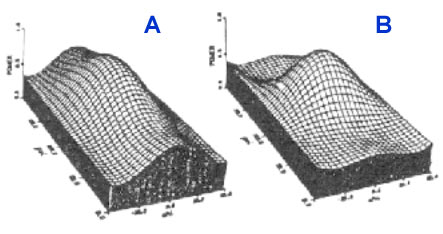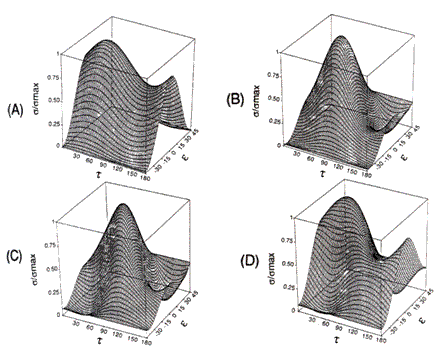Ice Structure and Type
Polarization signatures generated from the scattering matrix can be used to interpret the scattering properties of the target helping to understand the roughness, polarization dependence, and scattering mechanisms for that ice type. Figure 9-20 shows C-band co-polarization signatures for smooth first year ice with varying snow cover and for young and ridged ice. Note, there is less of a peak at VV for the ridged ice due to roughness effects and the reduced polarization dependence in the ice. This is partly due to plates of thin ice layers in the snow giving rise to differential HH and VV responses.

Figure 9-20. C-band Co-polarization signatures for a) young and ridged ice and b) for smooth first year ice with different snow cover properties (from  ).
).
The use of polarization signatures for ice type interpretation can also be demonstrated by comparing signatures for new, grey, rough grey, and desalinated sea ice types which represent a time series in terms of evolution and development. Figure 9-21 shows these polarization signatures and demonstrates the migration of the peak response from HH to VV which is related to the reduction in the dielectric constant of the ice surface over this time period. It is noted that the polarization response changes once again towards an HH peak as the ice further evolves, becomes rougher and desalinated.

Figure 9-21. Co-polarization C-band signatures of new, grey, rough grey, and desalinated sea ice types from scatterometer measurements. Note the change in the peak polarization response as the ice ages from new to desalinated ice types (from  ).
).
Page details
- Date modified: